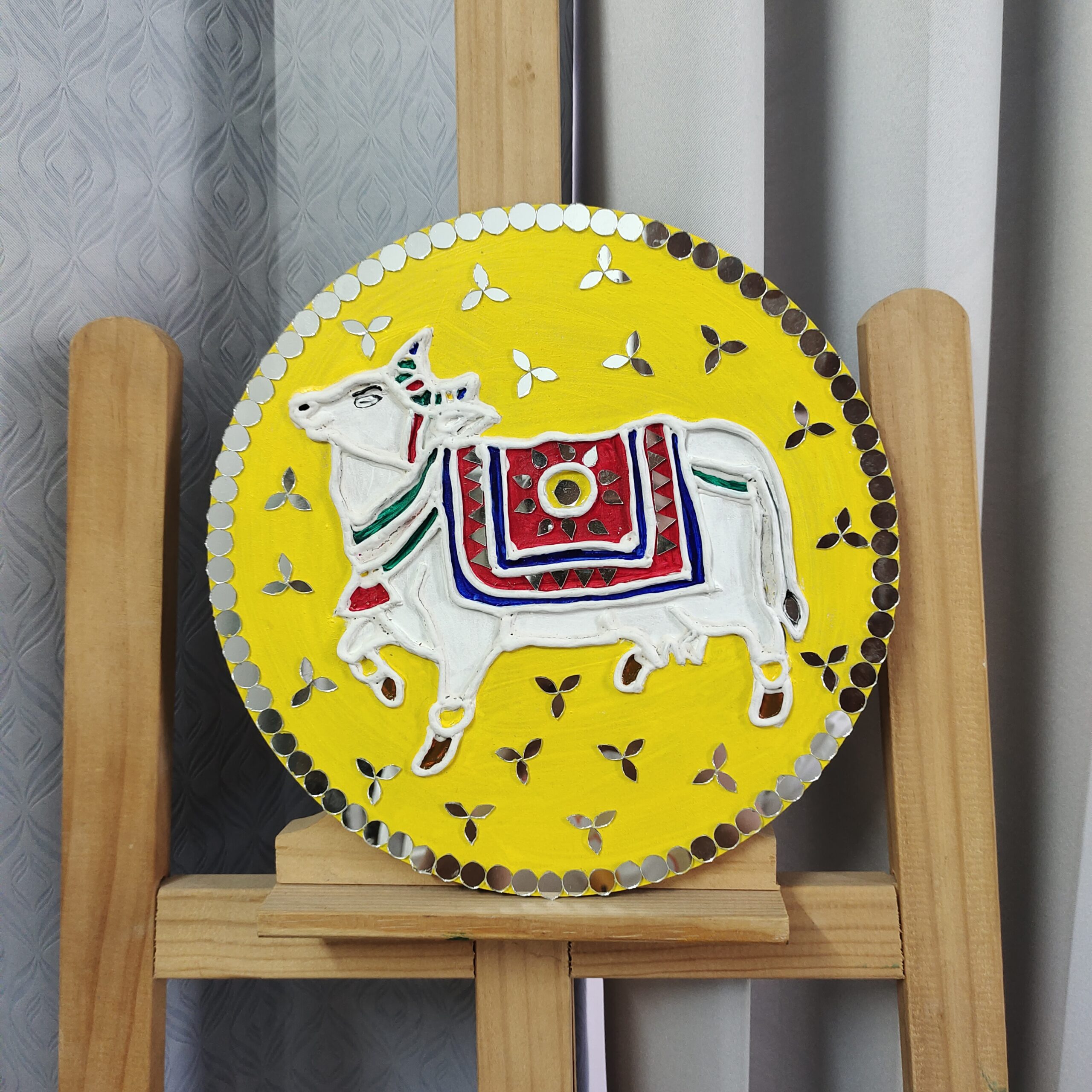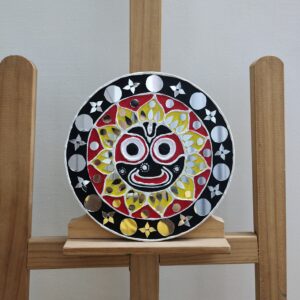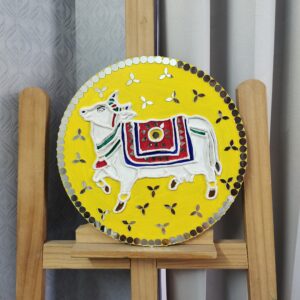| Handmade Pichwai Cow Lippan Art For Home Decor | – Prakarsha Arts |
Mud and mirror work, or lippan art, is a traditional craft that comes from Gujarat, India’s Kutch region. The Rabari group is the main practitioners of this unusual art form, which is well-known for its elaborate designs and use of local materials that capture the rich cultural legacy of the area. Of all the motifs found in Lippan art, the representation of cows is particularly significant because it combines creative expression with cultural symbolism.
For millennia, people have been practicing lippan art in the dry regions of Kutch. This craft has been handed down through the years by the pastoralist nomads known as the Rabaris. The interior walls of Bhungas, the circular mud huts that are used as houses in the area, were traditionally decorated with Lippan art. These homes’ visual attractiveness was increased by the artwork, which also served to keep them cool throughout the hot weather.
In India, cows hold great cultural and spiritual value, especially for the populations that depend on cattle for their subsistence. Cows are considered sacred creatures in Hinduism, where they stand for prosperity, motherhood, and nonviolence. This veneration is seen in the meticulous and detailed depictions of cows in Lippan art, which emphasizes the significance of these animals in both daily life and spiritual practice.
Mirrors and mud are the two main natural materials used in lippan art. A mixture of clay and camel dung is first made, and it is subsequently applied to the walls in the appropriate pattern. In order to create the illusion of three dimensions, artists mold the wet clay into complex shapes using their fingers or basic tools. Upon completion of the base, tiny mirror pieces are incorporated into the pattern. The artwork is given a unique appeal by these mirrors, called “Abhalas,” which capture light and shimmer in the process.
In Lippan art, cows are frequently portrayed with great detail. The cows’ bodies are created by artists using clay, emphasizing their outlines with curves and lines that resemble the animals’ organic characteristics. The figurines come to life with reflecting brilliance thanks to the inclusion of mirrors, which draw attention to particular elements like the horns and eyes. In addition to being physically pleasing, these artistic interpretations are rich in cultural allegories and meaning.
Cows are more than just decorative elements in Lippan art; they are symbols of history and meaning. The fact that cows are included in these pieces of art is evidence of their importance to the Rabari people. The Rabaris are pastoralists who rely on their livestock for food. Historically, cows have been used as trade money in addition to providing milk and dung for fuel. Thus, the creative portrayal of cows symbolizes the community’s strong bond with its livestock and the area they live on.
Furthermore, scenes of ordinary life are frequently featured in Lippan art using cows. Cows can be seen in these scenes grazing, getting milked, or just standing calmly in a field. Such imagery emphasizes themes of coexistence and mutual dependency while reflecting the peaceful relationship between humans and animals. The fact that cows are included further emphasizes the significance of cattle to the local economy and culture, enhancing their standing as symbols of prosperity and wealth.
Although Lippan art is still highly valued, it has changed to suit modern markets and tastes. These days, this kind of art can be found on canvases, panels, and other decorative objects in addition to the walls of typical dwellings. Modern materials and techniques are incorporated by artists while maintaining the fundamentals of their traditional trade in an innovative manner.
The way that cows are shown in Lippan art is still relevant today. Against the backdrop of global concerns over animal rights and environmental sustainability, cow iconography in Lippan art reminds us of the age-old wisdom that calls for a healthy, respectful interaction with the natural world. The focus of the art form on natural materials and age-old methods is in line with the public’s growing interest in handmade and environmentally friendly goods.
With its elaborate patterns and beautiful reflections, lippan art provides a glimpse into the rich cultural legacy of the Kutch region. In this art form, cows are portrayed in a very meaningful way, signifying the close ties that exist between the Rabari community, their cattle, and the environment. While adjusting to modern sensibilities and a worldwide acceptance, Lippan art maintains the timeless ideals and traditions that have supported it for generations. In addition to adding beauty to environments, Lippan’s artwork conveys tales of a way of life that values tradition, community, and the natural world.







Reviews
There are no reviews yet.